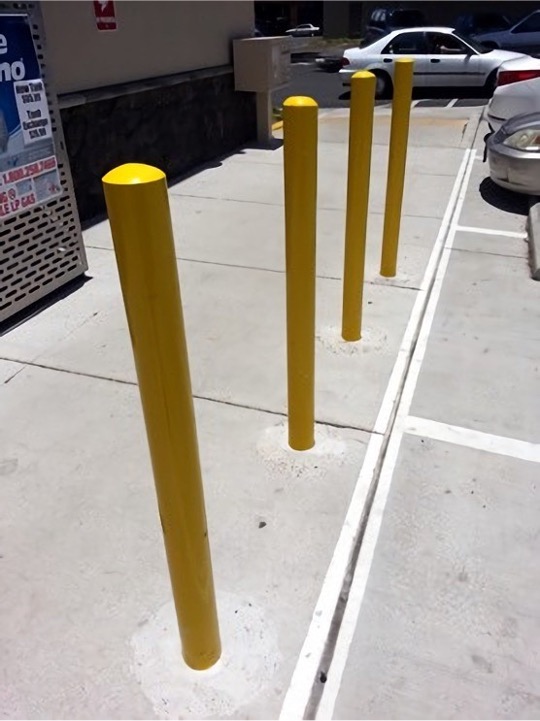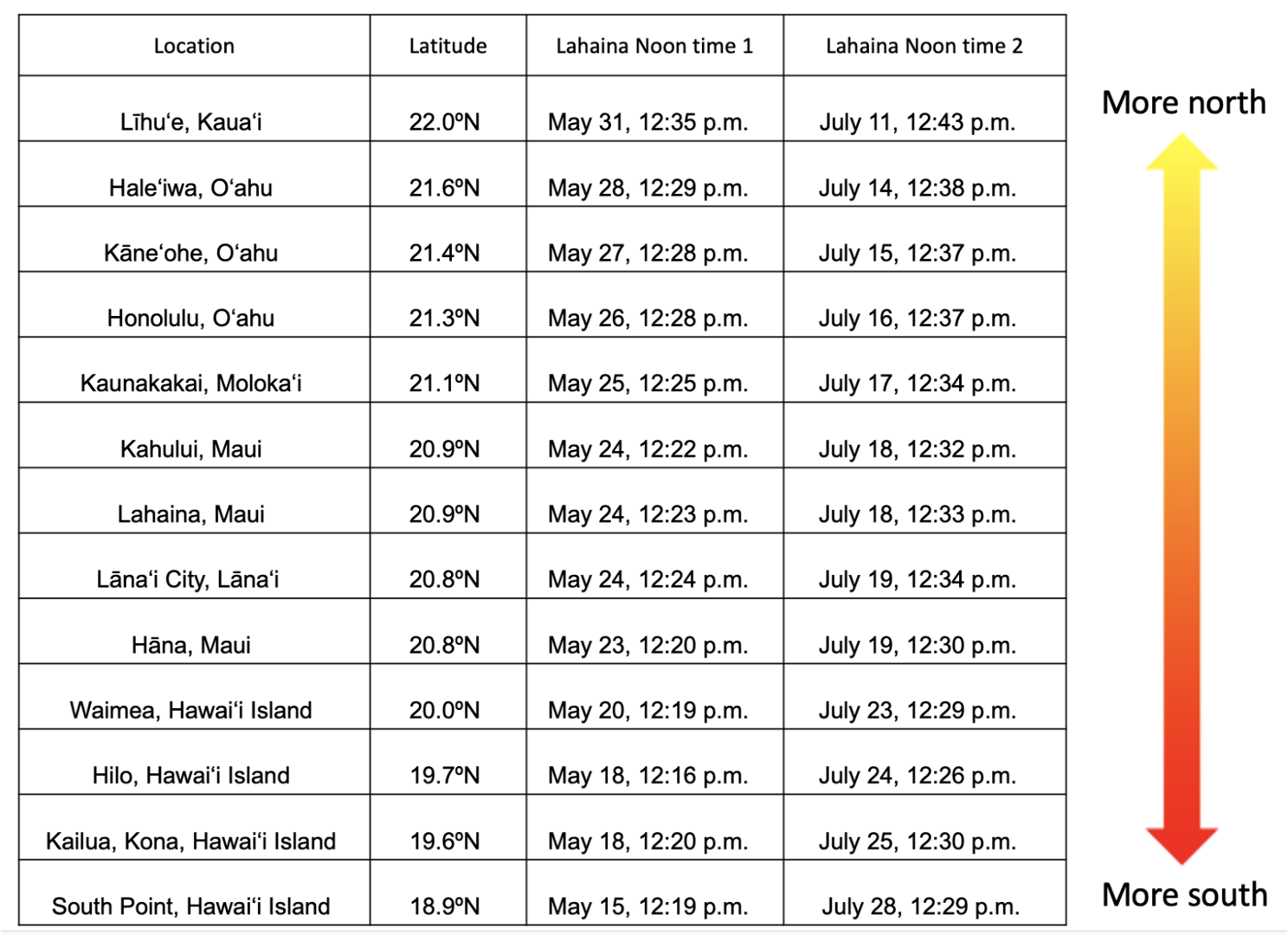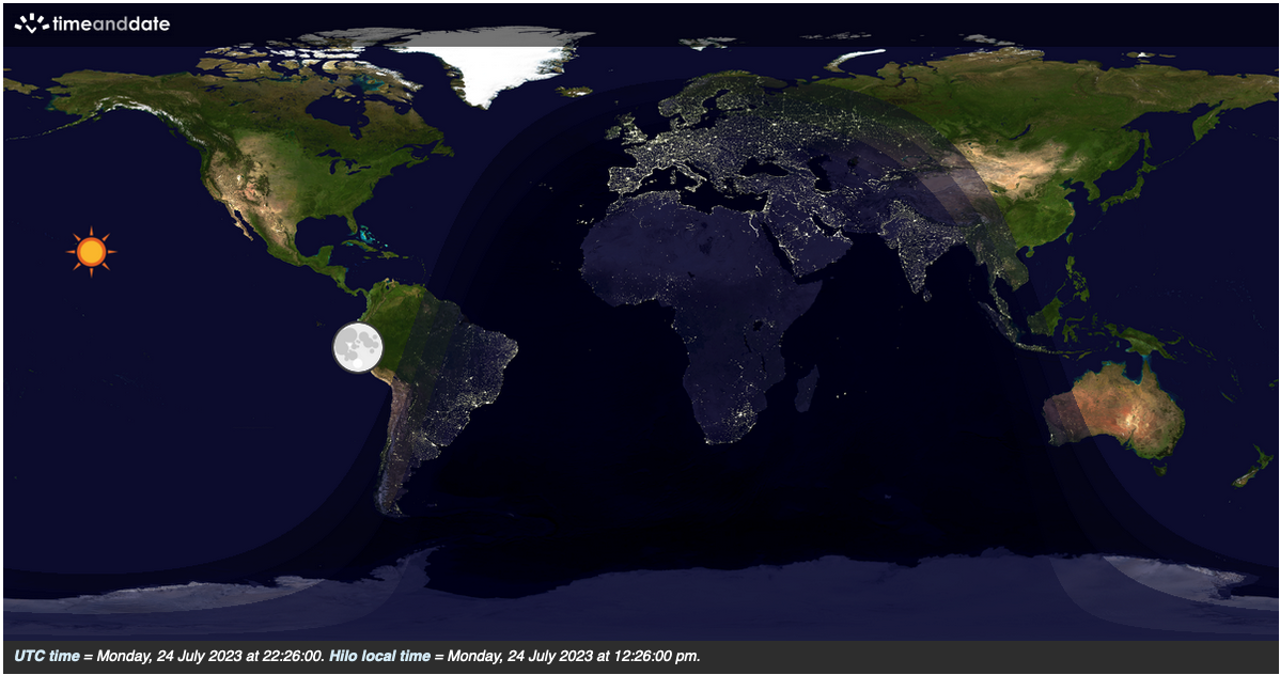Shadows disappear from the Hawaiian Islands
A phenomenon that only occurs two days per year is currently underway in the U.S state of Hawaii, in the middle of the Pacific. Shadows vanish at the sun’s peak in what is known as ‘Lahaina Noon’, derived from Hawaiian La haina, meaning ‘cruel sun’.
Take a look at the image which shows a striking lack of shadow. This infamous photo has become the face of Lahaina Noon, with many far and wide liking the phenomenon to a ‘badly rendered video game.’

Image: Picture taken during Lahaina Noon in Hawaii, USA, showing shadowless poles. Source: Igmur.
And here is another very similar photo, capturing the moment the sun is directly overhead.

Image: A thin shadow cast by the Lahaina Noon sun. Source: Daniel Ramirez, Flickr.
So, how exactly does a Lahaina Noon occur? Well, for starters, it turns out these shadowless days of the year can occur elsewhere outside of Hawaii. In fact, any location located in between the equator and Tropic of Capricorn or Tropic of Cancer has exactly two days of this mind-blowing sight.

Figure: The occurrence of Lahaina Noon by latitude with Honolulu, Hawaii as a reference. Source: Wikipedia.
It’s all to do with the position of the sun on any given day. In essence, the sun can only be directly overhead in the tropics; that is, anywhere between 0º and 23.5º north or south.
As the figure above shows, the two occurrences per year of Lahaina noon occur at equal distances on either side of the winter solstice (June 21) and summer solstice (December 21) depending on how close you are to the equator. Using Honolulu in Hawaii as an example (located at 21.3ºN), the two Lahaina Noon dates are May 24th and July 18th, each about 27 days from the solstice.
On the equator, the two dates are as far away from the solstices as possible (3 months), occurring around March 20th and September 22nd, a vast 6 months apart.
At the other end, on the Tropic of Capricorn and Tropic of Cancer, the two dates are as close to the solstices as possible. So close, in fact, that the day of Lahaina Noon occurs on one day: the summer and winter solstices themselves.

Figure: The dates and (local) times of Lahaina Noon across Hawaii in 2023. Source: Bishop Museum.
The table shows which places around Hawaii that have, and are yet to, experience Lahaina Noon. Whilst a good portion of the state already has the sun in the southern half of the sky, Waimea, Hilo, Kailua-Kona and South Point, all on the big island, are yet to see a shadowless day (Keep in mind, Hawaii is almost always a day behind Australia). Note how the closer towards the equator (south) you move, the further the dates get apart!

Figure: A map of the moment Hilo on Hawaii's big island will experience a Lahaina Noon, Monday, 24th July at 12:26pm local time (Tuesday 25th July at 8:26am AEST). Source: timeanddate.
Of course, the Lahaina dates for Australia won’t come about until the sun is overhead in the southern hemisphere after the spring equinox in late September. Here are the dates to see next shadowless days in some major centres of northern Australia. Note that Rockhampton is so close to the Tropic of Capricorn that the Lahaina Noon dates are mere days apart.

Figure: The dates and (local) times of Lahaina Noon across some major centres in northern Australia for late 2023 and early 2024. Source: timeanddate.